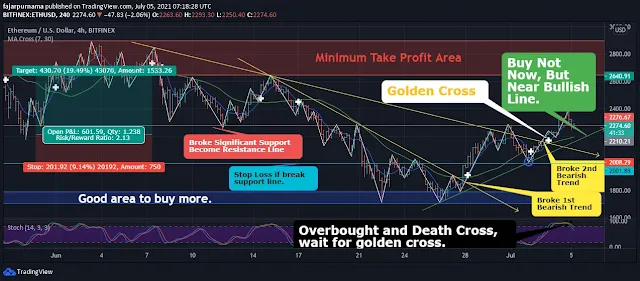Chart analysis is an critical tool used by traders and investors, providing them with invaluable insight into market trends, complex price patterns, and volatility. future potential. By examining historical price data presented through avatars, market participants are empowered to make the right decisions and realize auspicious trading prospects. In this presentation, we'll embark on an in-depth exploration of chart analysis theory, explain its central role in the financial industry, and reveal the fundamental methods actually used to chart analysis. decipher these visual artifacts.
- Understanding Chart Analysis:
Chart analysis, commonly known as technical analysis, involves examining historical price data meticulously plotted on charts, helping to predict impending price movements. Derived from the premise that market trends and patterns tend to repeat in cycles, this pattern gives traders the ability to predict future price momentum. This analytical vocabulary serves as a suitable complement to fundamental analysis, which focuses on assessing a company's financial strength and the interaction of economic factors.
- Types of Charts:
Different chart types are implemented in technical analysis, the main ones being line charts, bar charts and shaded candlestick charts. Line charts provide a brief representation of the time trend of price, while bar and candlestick patterns provide a complex mosaic of open and close price links, peaks and troughs, as well as spells. measure volume.
- Key Concepts in Chart Analysis:
a. Support and Resistance Levels: Support levels describe price levels where excess demand is concentrated, effectively predicting subsequent price drops. In contrast, resistance levels define when semi-crystallization pressures stand in the way of any significant uptrend. Being well aware of these thresholds demonstrates wisdom in identifying potential entry and exit points.
b. Trend Analysis: The trend, which represents the overall direction of the market, is at the heart of the analysis. Thanks to the in-depth analysis of trend lines, one can cleverly classify trends as bullish (uptrend), bearish (downtrend) or horizontal (sideward consolidation). Insightful understanding and alignment with current trends increases the likelihood of successful trading results.
c. Chart Patterns: Chart patterns, which are characterized by cyclical patterns highlighted in price charts, provide insight into the possibility of price reversal or continuation. Examples include head and shoulders, double top and bottom, triangles, and flags. This intelligent recognition of patterns gives traders the foresight to see future price movements.
d. Indicators: Technical indicators – such as moving averages, relative strength index (RSI) and moving average convergence divergence (MACD) – reinforce the analytical scaffolding. These metrics add additional information and clues regarding market momentum, inflection points, and potential entry or exit coordinates. Align these indicators with chart analysis that support or strengthen trading solutions.
- Applying Chart Analysis Techniques:
a. Identify Trends: Spotting dominant trends involves drawing trend lines to analyze price trajectories. This requires a balanced perspective that includes extended time periods while refining accuracy by looking at shorter timeframes, thereby refining entry and exit decisions.
b. Draw Support and Resistance Levels: Getting to key support and resistance levels involves deploying horizontal and trend-following breakouts. These architectural landmarks serve as vantage points to infer a possible price reversal or breakout, underpinning trading strategies.
c. Recognize Chart Patterns: The ability to identify common graphic patterns requires assimilation of their distinct characteristics. Increase pattern recognition with validation volume analysis and additional metrics that amplify diagnostic accuracy.
d. Combine with Indicators: A reasonable combination of technical indicators helps to increase the rigor of chart analysis. The selection of indicators should be in accordance with one's own trading method and timeframe.
- Risk Management and Continuous Learning:
In the field of graphical analysis, prudent risk management prevails. Careful implementation of stop-loss mechanisms reduces potential losses, and adherence to sound positioning protocols emphasizes wise practice. It is imperative to recognize the inherent imperfections of chart analysis and prioritize risk reduction. Furthermore, driving permanent growth involves constant refinement through diligent practice, reading educational resources, and constant vigilance to keep up with the ups and downs of the market.
The Power of Chart Analysis as an Effective Trading Tool:
Chart analysis has emerged as a powerful arsenal for traders and investors alike, providing a window into the trend tapestry, market archetypes and embryonic price trajectories. Navigate the maze of different chart structures, master fundamental analysis patterns, and skillfully leverage methods including support and resistance boundaries, pattern recognition, and symbiotic indicator integration , all of which come together to create profound implications for market participants. However, it should be noted that while graphical analysis is an integral aspect, it must converge with other methods of analysis to produce an overall perspective. Coupled with wise risk management and a commitment to constant learning, chart analysis becomes an invaluable tool, giving practitioners the advantage of uncovering insights into potential markets. Hide and refine business results.


